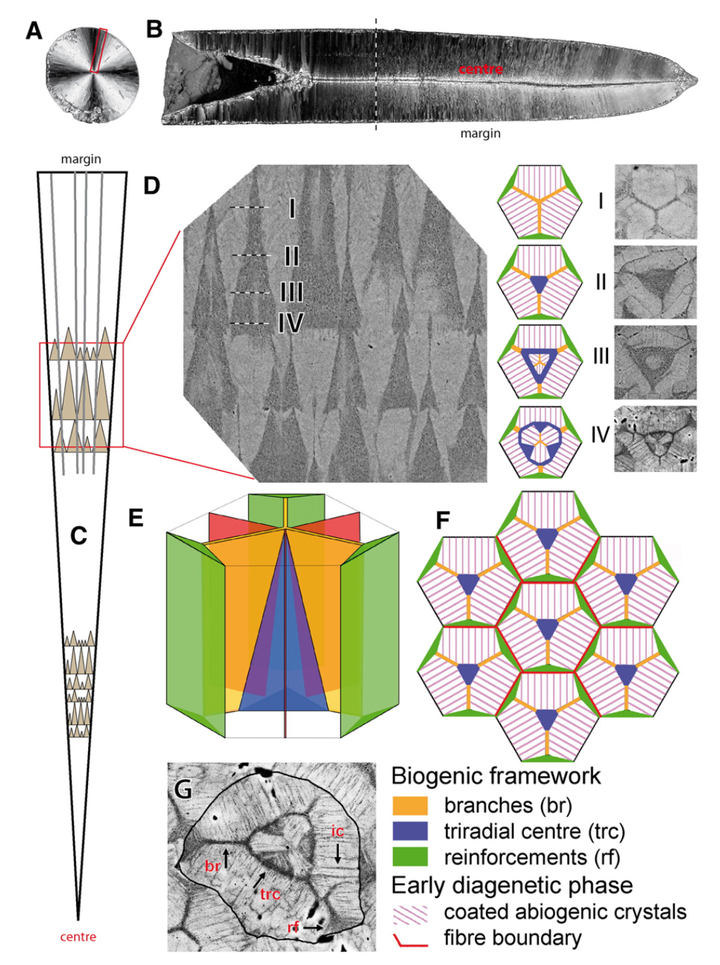Evidence for a composite organic–inorganic fabric of belemnite rostra: Implications for palaeoceanography and palaeoecology
 Structural and ultrastructural composition of belemnite rostra.
Structural and ultrastructural composition of belemnite rostra.Abstract
Carbonate skeletons of fossil marine organisms are widely used to reconstruct palaeoceanographic parameters. Specifically, the geochemistry of Jurassic and Cretaceous belemnite rostra is traditionally interpreted to represent near sea-surface seawater properties. More recently, an increasing number of workers, have reported significant scatter in geochemical data (e.g., δ18O, δ13C, element/Ca ratio) when comparing rostra from the same stratigraphic level or within a single belemnite rostrum. This scatter is not explained by differential diagenetic overprint alone. Here we report petrographic evidence on the primary ultrastructure of rostra of Megateuthis (Middle Jurassic) and Belemnitella and Gonioteuthis (Late Cretaceous). The biogenic ultrastructure consists of a filigree framework of triaxial branches and tetrahedrons of variable size forming a honeycomb-like network. Data presented here suggest that these rostra yielded as much as 50 to 90% primary pore space. On the level of a working hypothesis – and in analogy with modern cephalopods – we propose that the pore space was formerly filled with body fluid and/or organic compounds during the life time of these organisms. Intra-rostral porosity was post mortem occluded by earliest diagenetic isopachous calcite cements of a non-biogenic origin. These may have been precipitated due to increased alkalinity related to the decay of organic matter. If this holds true, then the resulting fabric represents a composite biogenic/abiogenic structure. In order to optically separate the two calcite phases forming a single calcite fibre, we employed a wide range of state-of-the-art analytical tools to thin sections and ultra-thin sections of well-preserved specimens. Pending a verification of these well-supported ultrastructural data by means of high-resolution geochemical analyses from biogenic and abiogenic phases, we suggest that these findings have significance for those using belemnite rostra as archives of their palaeoenvironment.